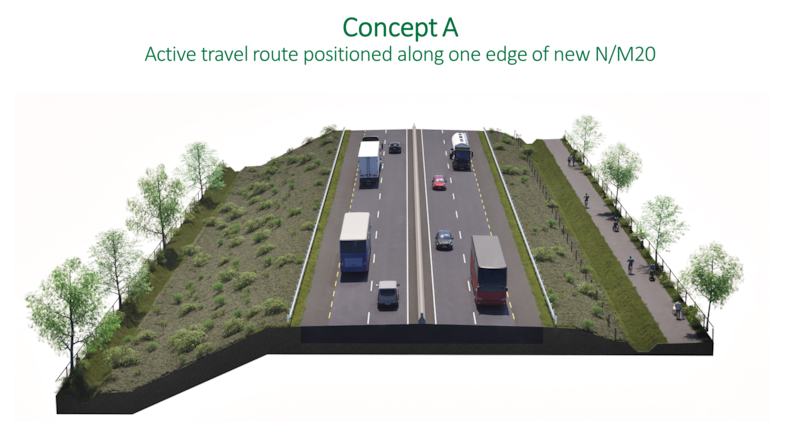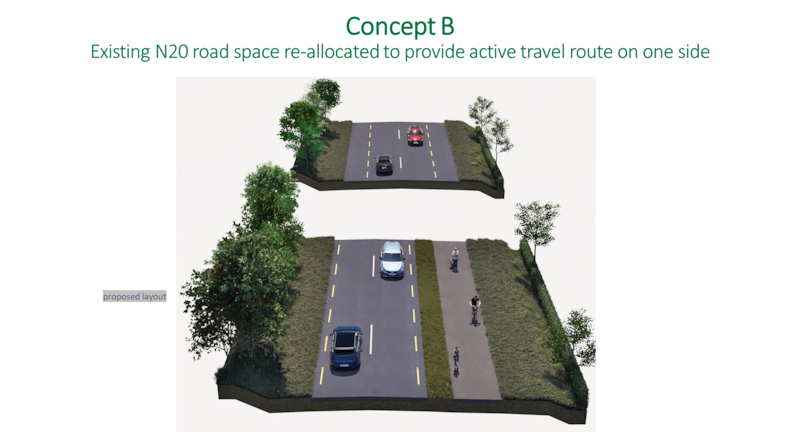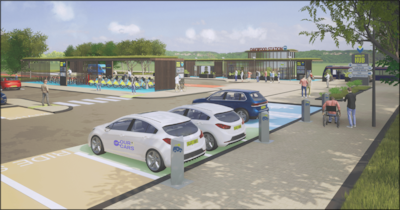Transport Infrastructure Ireland (TII) hopes to seek Government approval next year to apply for planning permission for a long-awaited €1.4 billion upgrade of the N20 road between Cork and Limerick to a full motorway.
The upgrade, first identified in the 1998 National Roads Needs Study, would involve the construction of more than 80km of motorway between Blarney on the outskirts of Cork city and Attyflin outside Limerick, where it would link into the N21 Limerick to Tralee road.
Jari Howard, N/M20 project co-ordinator with Limerick City and County Council, which is the lead authority on the project, on Monday briefed public representatives from Limerick and Cork on the details of the plan, which will cut travel times between Attyflin and Blarney by about 15 minutes.
Mr Howard said a 500m corridor selected for the motorway route, to the east of Mallow and Buttevant and west of Charleville, had been narrowed to 200m.
RTÉ news boss Deirdre McCarthy: ‘Tackling disinformation has to be much more of a focus now’
Marching practice in a car park with Ireland’s only remaining trade union band
Charm offensive: The close personal encounters with charmers that leave us uneasy
An Irishman in Israel: Is it better for my Israeli daughters to grow up in Tel Aviv or Dublin?
He said the corridor did not represent the actual space required to construct the motorway, nor to be acquired, but was rather an indication of the lands within which the project would be developed. The corridor’s width would be reduced further next year when fencing takes place, he said.

There will be motorway junctions at Blarney, Rathduff/Grenagh, Mourneabbey, Mallow, Buttevant and Charleville in Co Cork and Bruree and Croom in Co Limerick before it connects with the national primary road network at Attyflin.
The project, part of the Atlantic Corridor linking Galway to Cork, would also include an active travel dimension with a path connecting Blarney, Rathduff, Mallow, New Twopothouse, Buttevant, Ballyhea, Charleville, Bruree, Banogue, Croom and Patrickswell.

The project would also involve the construction of a number of transport hubs, which would allow for travellers to change between private cars, public transport and active travel such as cycling or walking.

Mr Howard said that while transport hubs were traditionally situated in urban areas, there was an opportunity to develop them in rural areas along the M20 which would help open up opportunities for local people.
The project would include a freight hub providing HGV parking and facilities for drivers, and charging points for electric vehicles.

Mr Howard said the project was based on a “first of its type” multi-modal approach to improving connectivity, safety and economic links between the cities of Cork and Limerick, and ultimately Galway.
Public representatives have long campaigned for an upgrade of the N20. Demand for this increased in 2021 after TII published the results of an analysis which concluded road traffic collisions on the road were four times more likely to be fatal than on the average Irish road – at 8 per cent and 2 per cent, respectively.
Of the 87 collisions recorded on the N20 between 2016 and 2018, seven involved the death of a road user and a further 13 led to serious injuries. The remaining 67 resulted in minor injuries to road users.
The study noted the high number of access points on the N20, including 216 entrances to fields, 295 to houses and 114 to public roads.
“There are a total of 625 access points on to the N20, or seven per kilometre, which is quite high compared with other national roads,” Mr Howard said. “You have a lot of traffic exiting off and entering on to the road and that can be problematic, particularly for anyone turning right and crossing a lane of traffic.”
He said 42 per cent of the road had no hard shoulder, meaning there was nowhere to go if a motorist needed to take evasive action.
“And there are really nasty spots on it like the Ballybeg bends outside Buttevant, which have been the scene of several fatalities,” he said. “There’s a high volume of traffic with many doing high speeds, but then a lot of slow-moving vehicles like tractors and agricultural machinery as well as a lot of HGVs, which people try to overtake so there are several factors making it dangerous.”











